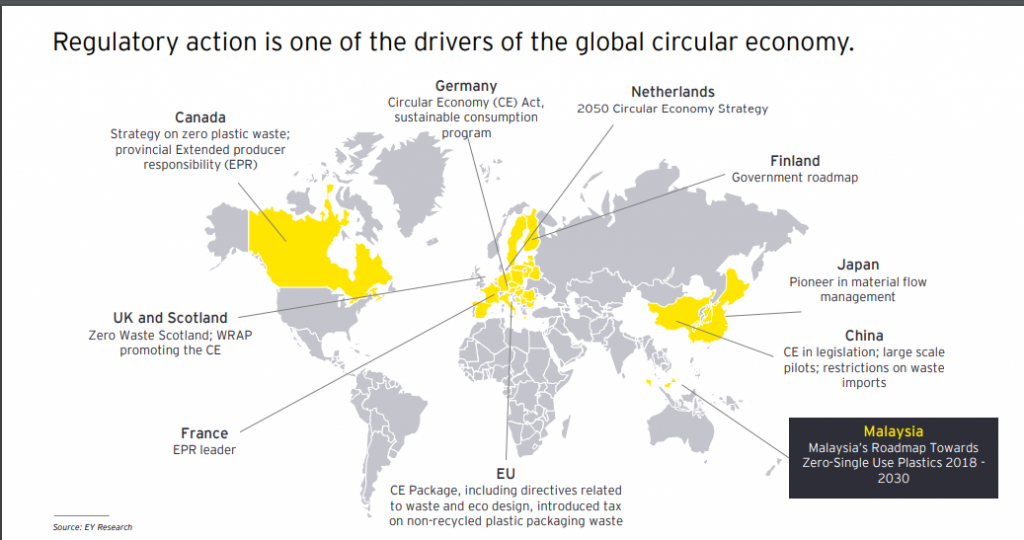It was stated in the 12th Malaysia Plan that the country is shifting from conventional linear economy model to the sustainable circular economy model.
The circular economy is based on the principles of designing out waste and pollution, keeping products and materials in use, and regenerating natural systems.
Currently, Malaysia is at the initiated stage of circular economy along with countries such as Russia, Georgia, Brazil, Mexico, Bhutan, Philippines and Vietnam.
This was said by Margaret Kuyor of the Housing and Local Government Ministry during the Malaysia Innovates Summit 2022 from 2 to 3 August at MITEC.
In realizing circular economy in Malaysia, Margaret said that as of now the ministry is working towards the establishment of the National Circular Economic Council.
The council would be the platform at national level as a coordinator for a uniform linear economic framework which differed between the ministry and states on product manufacturing, waste generation, solid waste collection, waste treatment as well as solid waste disposal.
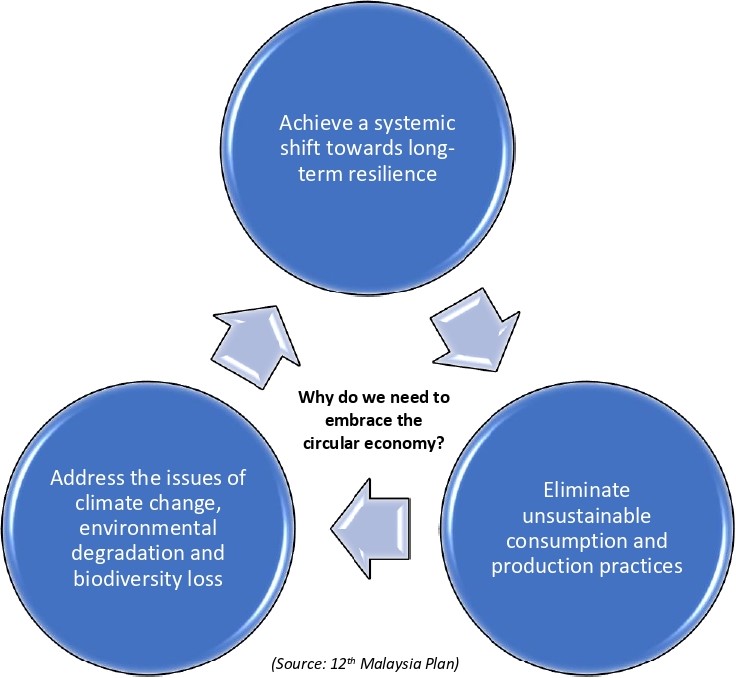
The concept of circular economy enables waste to fed back into the process of producing other products or generate renewable energy.
In the circular economy, products will be eco-labelled and designed to be of high quality, durable, repairable, reusable and recyclable.
So, lifespan of the products can be maintained to be as long as possible and damaged products can be repaired and reused.
Products that are broken, can then be recovered and recycled, and fall back into the manufacturing loop as inputs for new products or renewable energy generation.
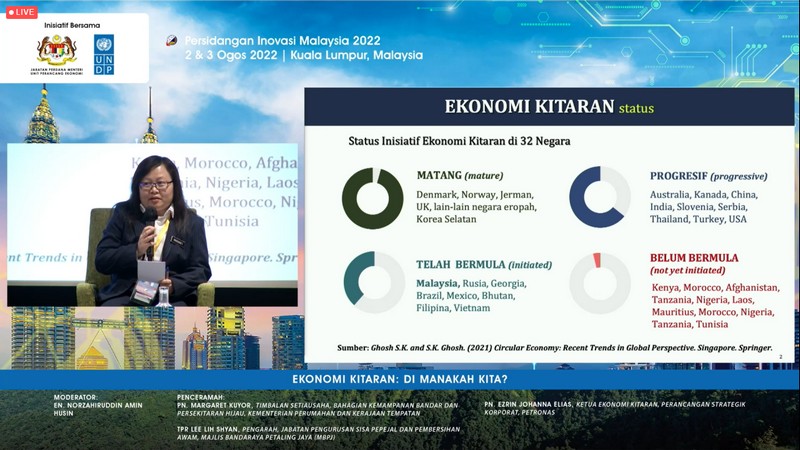
Thus, this will reduce the sourcing of raw materials needed for production.
As of now, most sectors in Malaysia are still practising linear economy, which is said to be resource-intensive and inefficient, generates high volumes of waste, emits greenhouse gases and causes pollution.
Thus, under the 12th Malaysia Plan, Malaysia has set goals towards the sustainability and circular transition to protect the environment and natural resources.
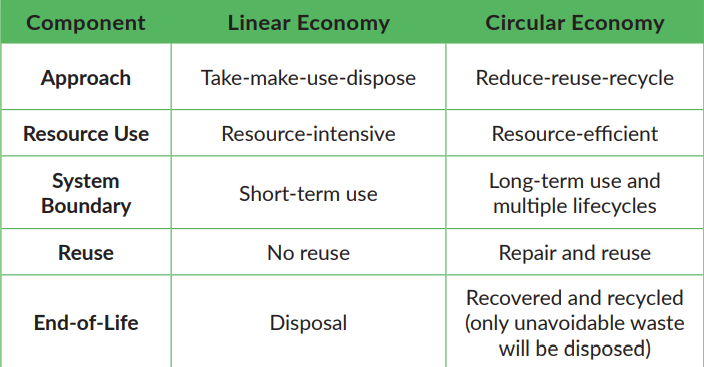
The circular economy presents a more holistic solution whereby economic growth and benefit is decoupled from the consumption of finite resources and the production of waste in the first place.
The transition to circular economy involves a great number of participations from various parties and all groups in societies.
Transitioning to a circular economy involves great business chances and can create new employment opportunities.
In Australia, a study conducted by KPMG estimated that the benefit of a circular economy will likely rise to USD210 billion in GDP and an additional 17,000 full-time equivalent jobs by 2048.
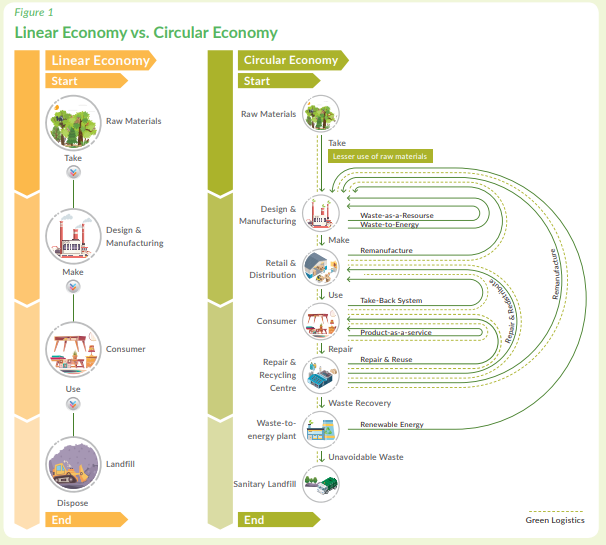
The European Commission’s Circular Economy Action Plan aspires to increase the EU’s GDP by an additional 0.5% by 2030 and create around 700,000 new jobs.
Transitioning to the circular economy will yield significant efficiency gains and cost-effectiveness as well as reduce pressure on the environment. It will also deliver a more innovative and competitive economy as well as create new opportunities for green growth.
For instance, public and private sectors will be encouraged to adopt and integrate the sustainable development goals (SDGs) and Environmental, Social and Government (ESG) principles in their decision-making and to implement energy efficiency initiatives in their as well as utilisation of renewable energy sources, such as hydrogen in their operation and premises.
This will eventually create green job opportunities and ensuring resource security, the circular economy will reduce waste generation, pollution, greenhouse gas (GHG) emissions and dependency on natural resources.
Small-to-medium enterprise (SMEs), which makes up 98.5 per cent of Malaysia’s business establishments, will also pick up this this principle and hence businesses will be encouraged to implement the circular economy along their value chain by using recycled materials to produce green products.
Within the industries, as there are more demands for green products and services from consumers, industries will then have to shift towards sustainable consumption and production (SCP) practices.
As industries are urged to produce green products and services, they will be encouraged to implement the circular economy concept throughout the products and services value chain, thus increase in use of recycled materials in the production cycle, thus reducing demand for raw inputs.
Hence, this would increase and feed the global demand for products in manufacturing sector to be more durable and resource-efficient goods that are repairable, reusable and recyclable.
The use of recycled materials and recycling of production waste will be increased, while the responsibility of producers in managing their end-of-life products will be extended.
This goes to show that as the demand for products is increasing due to growing number of populations in the country, adopting circular economy is inevitable, due to limited availability of natural resources.
Hence, the need to expand green economy and the adoption of circular economy.
